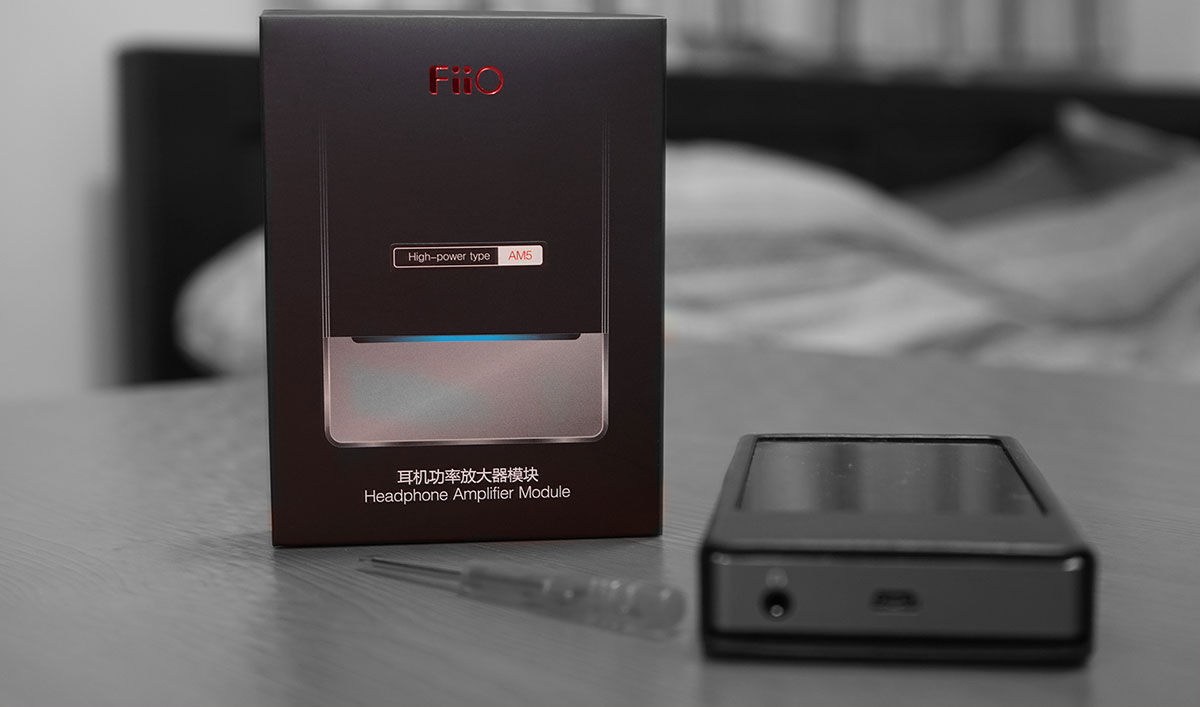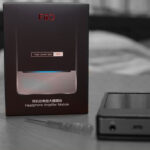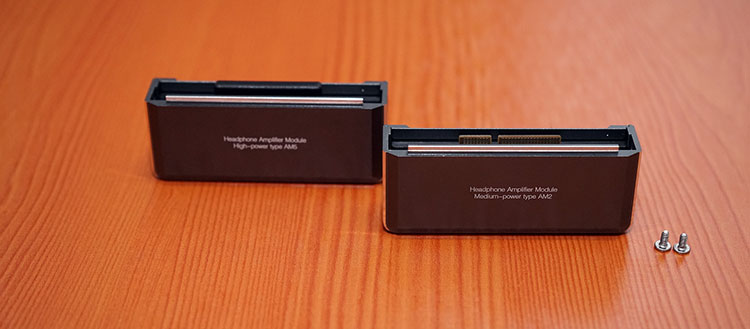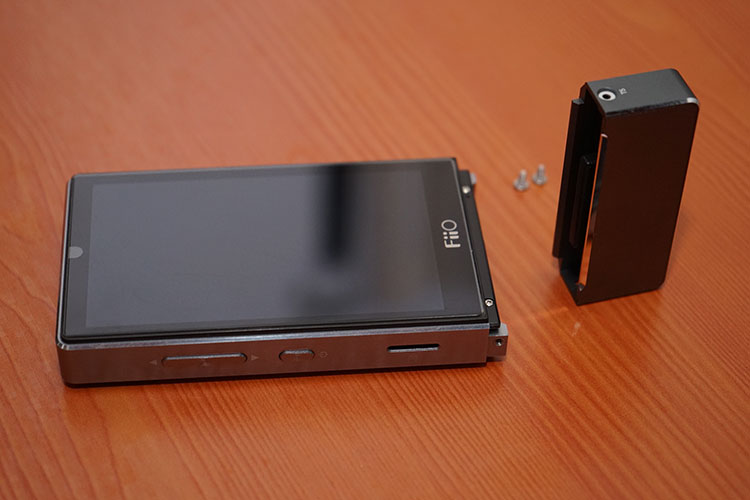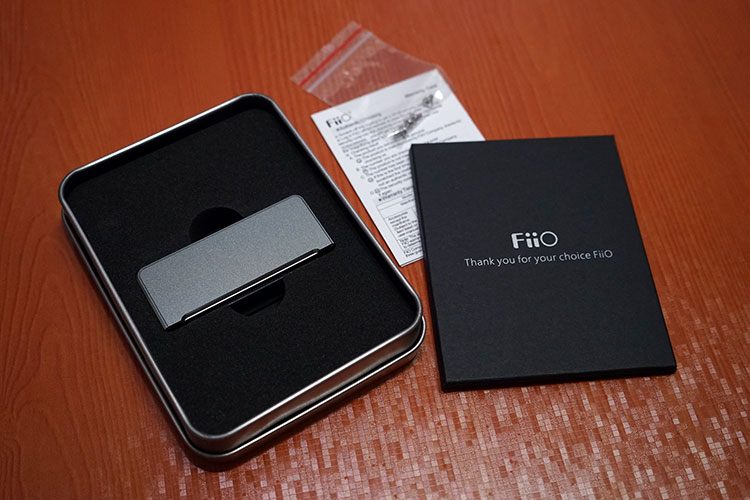In this feature, we review the FiiO AM5, which is a new high-powered amplifier modular card compatible with the X7 digital audio player. It is priced at $99.
Disclaimer: This was sent to us as a sample in exchange for our honest opinion. Headfonics is an independent website with no affiliate links or services. We thank FiiO for their support.
You can click here to learn more about the FiiO gear we have previously assessed on Headfonics.
Note, that this article follows our current scoring guidelines which you can read in more detail here.
Modules for the FiiO X7 DAP are now coming thick and fast with the public launch of the AM5 and as I write we just received the AM3.
I was very impressed with the AM2 for its flexibility with both portable headphones and IEMs, more so than the more neutral and flatter IEM module. So much so that I have not taken the AM2 off the X7 since receiving it.
Naturally, a module that is adorned with the words “High powered” has me licking my lips to be perfectly honest. Balanced is just around the corner with the AM3 but in the meantime, the AM5 should, on paper, be the module of choice for high-impedance headphones and costs just $99 in most markets.
Just an FYI FiiO recently announced that they would be selling the X7 without the default IEM module at a slightly lower price. This is excellent news for those who wish to pick a module to pair with their X7 and not be forced into buying the IEM module.
What is it?
The third release in a series of amp modules for the X7, the AM5 is their highest-powered module to date and is specifically targeted to those who wish to run full-sized headphones with higher power ratings or higher impedance ratings than what the AM2 or IEM module could cater for.
As such the specs on paper for the AM5 power-wise are considerably higher than either of the previous two modules with the AM5 delivering 0.5w into 32 ohms and almost a full watt into 16 ohms which is more than enough for just about any headphone rated at 32 ohms or less.
It can also deliver 55mW into 300 ohms so it is worth visiting the likes of the HD 800 to see if that will translate into appreciable sound quality and juice for the German flagship headphone.
In context, the IEM module, or AM1 delivered 200mW and 100mW into 32 ohms and 16 ohms respectively and the highly enjoyable AM2 still falls way short at 350mW and 300mW into 32 and 16 ohms.
Granted this is intentional but it will be interesting to see how the AM5 deals with IEMs compared to the other modules. Could this be the one module to rule them all?
Specifications
New Buffer
FiiO has made a small but important change to the internals of the AM5 by keeping the JRC MUSES02 opamp from the previous AM2 module and changing the previous BUF634 buffer to a TI TPA6120A2.
With the retention of the MUSES02 in the AM5, you can still expect the same level of coloration you found in the AM2 not to mention a greater power output from the AM5.
Dynamic Range & Voltage
The TI TPA6120A2 is specifically designed to handle high-powered output audio signals whilst retaining excellent low levels of distortion as well as yielding up to 128dB of dynamic range. Note, the AM5 though is listed as greater or equal to 120dB of dynamic range, which may be a conservative estimate or a limitation of the design of the AM5.
FiiO pretty much expects users of the AM5 are going to be running in high gain with decent volume on heavy-duty cans. The AM5 needs to be able to tolerate that frequent current-on-demand without falling apart with stupidly high noise floors and degraded SNR.
Output resistance levels stay relatively the same with both the AM3 and AM5 showing 0.5 ohms output resistance. Voltage output on the AM5 is 11v which is around 25% higher than the AM2 at 8.8v and more than doubles the AM1 which is rated at 5.2v.
Change Over
Attaching the AM5 is the same process as the AM2 by detaching two screws on each side of the X7 using the supplied T5 screwdriver that came with your X7 (do not lose this as the modules do not come with a spare one).
Once unscrewed you simply slide out the existing module, take the cap off the inside of the AM5 card, slide back in, and put the screw back in.
Once again, note in the top corner of the display for the AM5 notification to ensure your module is correctly inserted and working. You can do the changeover without turning the X7 off (hot swap), but FiiO does not advise doing that given that it is a live connection.
FYI for those that have had their FiiO X7 for a while you will need to upgrade your firmware to at least FW1.91 when trying to output audio with the AM5 attached.
Battery life
Unsurprisingly the higher power output of the AM5 means you will get less out of the X7 battery than the AM2 and AM1 modules. This time, FiiO is quoting on paper around 6 hours compared to 8 from the AM2 and 9 for the AM1.
That’s a 30% drop overall and it has been a very long time since I handled a DAP with 6 hours or less. 6 hours though should be considered a best-case scenario because often I came up in the 5-6 hour marker or even less if I was using WiFi and streaming from Spotify.
I did get close to or slightly beyond 6 hours if I toned down the superfluous menu operations, killed a few processes, and kept the screen off.
It will not be the commuters’ choice to be honest but then again grabbing an HD800/X7(AM5) combo on the 830am from Chiswick is not going to be high on practicality. Consider this more of a transportable or home-based solution using the AM5 perhaps with the dock or the DAC out.
Sound Impressions
Tonality
This time, the tonal differences are a little subtler between the AM2 and the AM5 than previously comparing the AM2 to the AM1. After all, both share the same MUSES02 DAC with only the buffer chip variation between them physically.
The AM5 still plays to the same broad strengths as the AM2. This is a much more musical signature, a more low-end grunt, and a better body than the AM1.
What sets the AM5 apart tonally from the AM2 is the additional power the AM5 is adding to the equation. It ups the dynamics and engagement over the AM2, making the AM2 the slightly softer and politer of the two in comparison.
If anything the AM5 just sounds that bit more aggressive than the AM2. There is a touch more clarity and with EDM and hard rock, the AM5 does hit a little harder with slightly more sub-bass presence.
Neither module could be considered neutral, at least not in comparison to the AM1, but I do like what I am hearing from the AM5 just that bit more than the AM2.
IEMs
In much the same way the AM2 is a versatile and flexible amp the AM5 is perhaps even defter at handling a wide range of earphones and headphones with low noise floors for sensitive IEMs and even more power on tap for a wider range of headphones.
Volume levels are a little misleading for the AM2 and AM5 for sensitive IEMs. There is a small difference perhaps about 2-3 steps max between the two modules for IEMs like the Campfire Audio Jupiter and Shure SE846. I got to around 30-35 for both before finding the dB level just a bit much for my ears with both IEMs.
Power is not a huge requirement with neither of these two drawing huge amounts of current. The tonal differences though between both modules are appreciable even on low gain low volume with highly sensitive IEMs and the noise floor is excellent with no discernible hiss.
Whether you need that additional power for most IEMs is debatable. Certainly, for hugely power-hungry IEMs like the new oBravo planar IEM range (ERIB), the AM5 is perfect and needs that additional power sounding just right at 60 steps on the X7 which is a good 25-30 steps higher than the Jupiter and SE846.
For these sensitive IEMs, the AM2 may provide additional flexibility over the AM5 but, on a tonal level, I found the AM5 just that bit more involving.
Headphones
The AM5 comes into its own when you start using it with less efficient or harder-to-drive headphones such as planars and higher impedance cans such as the DT1770 and at a pinch the HD800.
Not that I am suggesting you ditch your high-end desktop rig for the AM5 but compared to the AM2 the AM5 has more than enough in the tank to drive these cans to acceptable levels without sounding tinny or lacking in dynamics.
Planar Headphones
Efficient planars such as the PM-3/HE400S will sound equally good on either module it just depends on what type of tonal match you want to go with. Both modules have enough power to drive the PM-3 with ease.
Moving up the chain and though I prefer a full desktop amp, the Ether C nevertheless sounded excellent with the AM5. The AM2 did a decent job but sounded a little softer and more muted than the more visceral and dynamic AM5.
Volume on high gain with the AM5 and Ether C was a more than manageable 70 steps. The FiiO X7/AM5 is not quite up there with the Mojo/Ether C in terms of tonal matching. The Mojo has a more expansive soundstage and a heavier low end which suits the Ether C’s flatter presentation.
Dynamic Headphones
Dynamic headphones such as the DT1770 and AKG’s K812 run smoothly with the AM5 between 70 and 75 steps on high gain which is around 1-3 steps lower than the AM2.
The major difference between the 2 modules on these headphones was the fullness of sound, the better dynamics, and a slightly better low-end heft in the AM5 over the politer but smoother AM2.
The 250 ohm DT1770 and the AM5, in particular, was a beautiful match with wonderful extension. This was probably my favorite closed dynamic pairing with the AM5 for EDM and rock, demonstrating excellent staging, an articulate low-end, and a clear vocal presence.
Volume-wise the AM5 also had no issues with the 300 ohm HD800, sitting comfortably at around 75 – 80 steps. Tonally, though, the HD800 scales better with quality desktop rigs such as the Questyle CMA800R or the tube Studio 6, both big rigs that drive the HD800 with authority offering top-notch resolution and tonal qualities.
Having said that, as a DAP, the AM5 does an adequate job with Senn’s flagship, sounding neither tinny nor shrill with decent depth and good resolution but lacking a bit in width and imaging to truly push the HD800 to optimal levels.
It’s not as buttery smooth or rich as say the Continental Dual Mono from ALO Audio and displays a touch more sibilance on some vocals compared to the Lotoo Paw Gold but overall it was a competent display from the AM5 and certainly more dynamic and engaging than the AM2.
Our Verdict
So now we have three modules for the X7 all priced at $99 and all offering something different, be it efficiency or power, be it neutrality or musicality. I did say in the AM2 review that I wished you did not have to buy the AM1 with the X7 just to lower the overall cost of ownership of this developing ecosystem for the X7.
Thankfully, FiiO has responded to this by releasing the X7 without any amp modules for a lower price. If you want an AM2 or an AM5 now you can have it without having to buy the AM1. Good news for those with particular usage needs or those simply on a tighter budget.
Sadly, the battery does take a hit, you will lose up to 25% more than the AM2 with the lifespan dropping down to around 6 hours due to the additional power of the AM5. This may not be suitable for those looking for a full day’s use or relying heavily on WiFi streaming.
In that regard, you should take up the AM2 if you want a longer battery life or even the AM1 for maximum battery output if you enjoy the neutral profile of the AM1 with IEMs.
I am asking for this because the balanced AM3 is on its way for review but right now the AM5 has the edge over the AM2 as FiiO’s best module for the X7.
Tonally they have a similar musical profile, negating neutrality for low-end heft and a thicker note than the AM1 but this time, the AM5 offers better dynamics, slightly more slam, and generally just a more aggressive tonality that I think suits rock and EDM even more than the AM2.
By contrast, the AM2 is slightly politer in comparison, and whilst I still think the AM2 towers above the AM1 and is still very suitable for rock and EDM it doesn’t nail it quite like the AM5, particularly with headphones like the DT1770.
As a value add, IEMs remain relevant. The AM5 still delivers a competent low-noise floor and a controllable level of gain even with efficient earphones. Impressive.
FiiO AM5 Technical Specifications
- Voltage amplification: Muses02
- Output power 1: >500mW (32Ω/1kHz)
- Output Power 2: >800mW (16Ω/1kHz)
- Output power 3: >55mW (300Ω/1kHz)
- Frequency Response: 9Hz~84kHz (13dB)
- SNR: ≥120dB (A-weighted)
- Output: <0.5Ω (32Ω load)
- Impedance Channel Separation: 72 dB (32Ω/1kHz)
- THD+N: <0.001% (32Ω/1kHz)
- Peak Output Voltage: >11 Vp-p
- Max. Output Voltage: >250mA
- Drive Ability: 16~300Ω (recommended)
- Battery: ≥6 Hours Gain: L
- Dimensions: 64 x 25 x 16mm
- Weight: 32g Unit 135g including packaging

